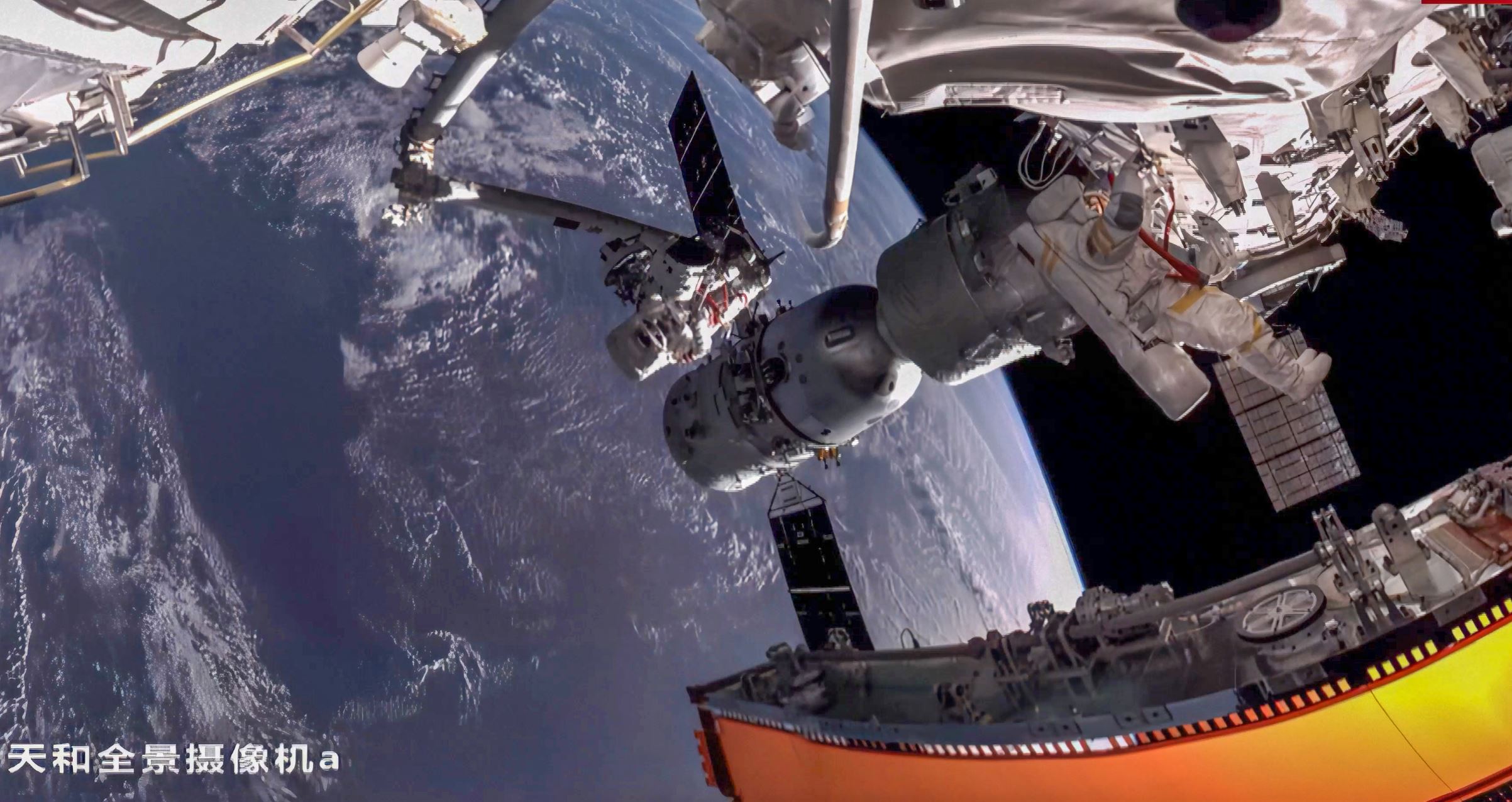Three upcoming launches and a crew handover will complete T-shaped orbital outpost
HELSINKI — China is preparing to launch the final missions to complete its three-module Tiangong space station which it plans to keep constantly occupied for at least a decade.
A Long March 5B is being assembled and tested at Wenchang Satellite Launch Center on the southern island of Hainan. The 849-metric-ton rocket is expected to launch the third and final module for the Tiangong space station at the end of October.
Mengtian (“dreaming of the heavens”) is a 17.9-meter-long, 4.2-meter-diameter and 22-ton module designed to host a range of science experiments with areas of research including fluid physics, combustion and materials science and space technologies.
The module was fueled for launch Oct. 9, according to China’s human spaceflight agency, CMSA.
After insertion into orbit by the Long March 5B first stage, Mengtian will rendezvous and dock with Tiangong, joining two earlier modules—the Tianhe core module and Wentian experiment module—in orbit to complete the Tiangong space station.
Wentian, launched in July, was transpositioned from the forward docking port on Tianhe to the starboard port Sept. 30, making way for the arrival of Mengtian.
The new module will likewise dock with the forward port and be moved to the port docking ring, completing the T-shaped Tiangong space station. The crew of the ongoing Shenzhou-14 crewed mission are then likely to perform an EVA to assess Mengtian and set up equipment.
Mengtian 实验舱已经按计划完成了在发射场技术区的总装、测试工作,并在昨天完成了推进剂加注。
Mengtian 实验舱即将与 CZ-5B Y4 运载火箭开展系统功能联合检查。 https://t.co/7seawBbVJC pic.twitter.com/KJCybmMU1R— Seger YU (@SegerYu) October 10, 2022
Meanwhile a Long March 7 rocket arrived at Wenchang Oct. 11 and will be assembled to launch the Tianzhou-5 cargo mission. Launch could take place in the first half of November.
Tianzhou-5 will be the fourth cargo mission to Tiangong and will provide supplies for the upcoming Shenzhou-15 crewed mission.
Before this, Tianzhou-4, which supplied Shenzhou-14, will undock from Tiangong and be deorbited to make way for Tianzhou-5.
Meanwhile, at the Jiuquan Satellite Launch Center in the Gobi Desert, a Long March 2F and the Shenzhou-15 crew spacecraft are being readied for a launch that could take place as early as late November.
The pair have been in a state of standby for launch to Tiangong in the case of an emergency in orbit. It would take 8.5 days to be made ready for launch in an emergency scenario.
When Shenzhou-15 does reach Tiangong, the new crew will be greeted by the Shenzhou-14 astronauts. This will mark China’s first direct crew handover.
Shenzhou-14’s return to Earth days later will complete the construction phase of the space station, just over 30 years after the project was formally approved.
Mariel Borowitz, an associate professor at the Georgia Institute of Technology, notes that China’s completion of the Tiangong space station will be a significant accomplishment, both as an impressive scientific feat and for demonstrating their space capabilities compared to the United States.
“With the completion of their modular space station, China has a capability that is broadly in line with that offered by the International Space Station,” told SpaceNews via email. “In addition, China’s space station is newer and likely to outlast the International Space Station, currently expected to be retired in 2030, which may offer China more stability in their low Earth orbit activities.
“China has stated on numerous occasions that they welcome international engagement related to their station, so it will be interesting to see whether any such engagement occurs now that the station is complete.”
China intends to keep the space station permanently inhabited for at least a decade, gaining human spaceflight experience, conducting a range of experiments and potentially exploring commercial possibilities.
The Xuntian optical module—a co-orbiting, Hubble-class space survey telescope—is planned for launch in late 2023 or 2024. Xuntian will be capable of docking with Tiangong for maintenance and repairs.
The space station itself could also be expanded from three to six modules, according to Chinese space officials. Such an expansion may depend upon other countries joining the project.
